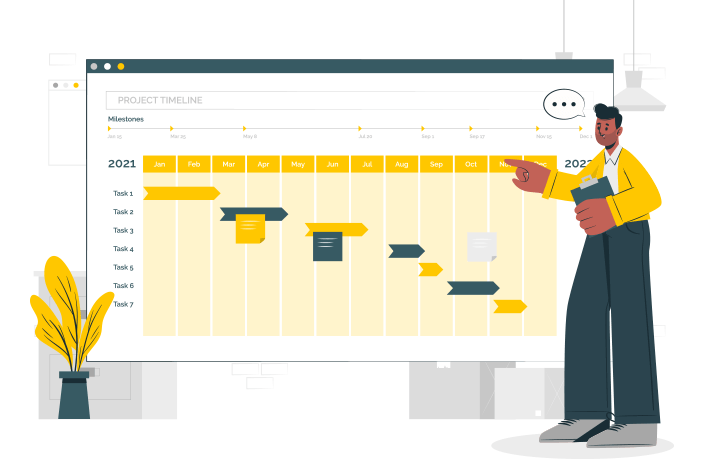
Click the button to start reading
Top 5 Elements Of Creative Strategy Development And Implementation Steps
When you begin a new project, one of the first things you do is form an initial outline – one of the essential elements of creative strategy development. This outline is one of the most important aspects of any new project and can be the deciding factor of its success. But one thing is often overlooked…
Creative strategy development is so much more than fancy words, clever designs, and standard sales tactics. While those are certainly important aspects, a creative strategy is made up of much more. First, let’s define creative strategy; then, we’ll go through the steps to develop and implement the creative strategy successfully.

What Is A Creative Strategy?
A creative strategy is made up of 2 essential parts.
First, the creative aspect. What typically comes to mind are design teams, writers, photographers, product designers, and digital media managers when we talk about creatives in the workplace. Creatives are the people who form the basis of new products and strategies, with an important set of elements in mind (we’ll break those down in a minute).
Second is the actual strategic planning that is done to help a new marketing project find high rates of success.
Essentially, creative strategy development is the process of identifying your marketing goals and designing a strategic plan to achieve them. It’s how you will lead your team in the right direction. These strategies allow you to create content that reflects the company’s values, engages customers, and solves a problem. A creative strategy will guide your business from its current state to meeting (and surpassing) your long-term vision.

5 Essential Elements Of A Successful Creative Strategy
While creative strategies can vary in their action plans and goals, there are 5 main elements of a creative strategy that play a vital role in its creation. These include:
- Brand Awareness
This is the knowledge you have of what helps people identify your company, product, or personal brand. What are the long-term goals of your brand? What is the brand’s history? What has the growth of your brand looked like? What is your mission statement? What are the main values? All of these concepts play a vital role in the development of your creative strategy and must be well known to your marketing team. - Main Objective
The goal of the marketing strategy. (We’ll get more into this in the next section) - Target Audience
Who are you directing your marketing efforts towards? Knowing who you are talking to in your marketing will determine what strategies would best resonate with your ideal customer. Think of things like gender, age, demographic, financial status, likes and dislikes, etc. Many companies will even create a client avatar reflecting the ideal customer who the marketing campaign would be directed to. - Primary USP
The Unique Selling Proposition is why you’re the best person to be providing your service/product. The USP makes you stand out from your competitors by differentiating your offer (more on this below). - Tone
Many companies have created a tone guide for their marketing department to follow when creating any material for the company. This ensures that the voice of the company sounds the same across all platforms and is easily identified by their consumer base. A coherent tone across all of your marketing is essential in continuing to grow your brand and attract your target audience.

Process For Developing And Executing Your Creative Strategy
The process of developing and implementing a creative strategy is made up of 4 main parts: planning, developing, implementing, and measuring. Let’s take a deeper look at each one.
Planning And Development
- Identify And Set Realistic Goals
Setting goals that reflect your company’s values and are in line with its long-term goals is the first step in planning your creative strategy. Goals can include things like boosting engagement on social channels, creating hotter leads in your funnels, increasing sales, etc. These goals, however, must be outlined appropriately to be successful. This is where methods like SMART Goals can be highly beneficial, ensuring they are specific, measurable, achievable, relevant, and time-bound. - Identify Your Audience’s Problems
What problem are you solving for your target audience? What are their pain points? When you consider these questions, it is important to go deeper than surface level. When you think about the benefits you’re offering them, think about how they solve the bigger issues in their lives.For example, if you’re marketing a system to enhance team management, you’re making it easier for managers to interact with their team. You’re also helping them maintain their projects through one system. When you consider the deeper pain points, you’re creating a product that serves your customers’ bigger struggles. These include providing those managers with regaining their time, tracking progress with ease, and making deadlines nearly impossible to miss, all from one singular tool.Identify your audience’s pain points, and create a strategy to highlight your ability to fix them. - Brainstorm And Choose Your Creative Strategy
When you’re developing a new creative strategy, a diverse team is beneficial. Diversity allows for a higher variety of perspectives, providing a better selection of ideas. Varying perspectives leads to higher rates of collaboration, producing more refined solutions and a strategy that will connect on a more personal level with your audience.A great way to begin planning your creative strategy is to work backward from the goals you’ve chosen. This will help you create a well-structured plan that keeps the timeframe of the project in mind. - Create Your Unique Selling Proposition (USP)
Specifically, your USP is where you’ll define why you’re the best option. This will position you as the authority in your industry and is the first step in building trust with your customers.However, before you can position yourself as the best option in the industry, you must first know exactly who your ideal customer will be. You can achieve this by researching your target audience at length. Being knowledgeable about who you’re targeting will help you develop a more directed, personable strategy. This will allow you to connect with your audience on a deeper level than your competition.
Determine How You’ll Measure Success
The easiest way to do this is to set milestones to gauge progress throughout the project’s lifetime. This will provide you with a way to adjust your strategy if you find it’s not aligning with your expected timeline.
Depending on your project, your key performance indicators (KPI) will fluctuate to fit the strategy, however, they may include:
-
- Click-through rates
- Number of new email subscribers
- Engagement on social platforms
- Number of sales
- Profits made over a specific amount of time

Implementing And Measuring
- Pre-Test
When beginning any new marketing campaign, it is essential to pre-test your strategies in smaller pools. This will help you gain a better understanding of the potential success of your creative strategy. This will also provide you with the opportunity to identify any issues or shortcomings in your strategy and adjust them to be more successful.While in the pre-test stage, using an A/B test strategy is a great way to compare campaigns that have slight differences in them. This will provide you with the opportunity to see how each one performs and create your final campaign using the data collected from each.Once you’re satisfied with your pre-test results, it’s time to execute your final project and release it to your full audience. - Evaluate Your Campaigns
Once you’ve executed your final product, ensure you check in on its success at various stages. This will let you monitor its progress and pivot if needed. The best way to do this is to use your previously determined milestones to measure the likelihood of meeting your goals in their expected timelines.Another way to evaluate your campaign is to compare data from past creative strategies to the data being received from your current strategy. This will give you a strong indication of growth over longer periods of time and allow you to measure success on a larger scale. This also provides you with a unique opportunity to “bring back” previous aspects of a creative strategy that performed well in the past. - Optimize
If you don’t meet your goals right away, consider completing some additional testing of various marketing techniques (if time allows), while still maintaining the essential aspects of the project.If you do find your creative strategy failing, use it as a learning opportunity. Evaluate why your creative strategy may not have performed the way you had hoped. Take a deeper look into your USP, tone guide, and target audience research to determine if there are any aspects that may have been missed or need to be tweaked. Use all the data you have to make a more informed strategy for your next project.
Conclusion
Successfully developing and implementing a creative strategy is a powerful tool. Develop a creative strategy that helps you stand above the competition while remaining true to your company’s values and long-term goals. This will lead you to higher rates of success that benefit your company for years to come.
















